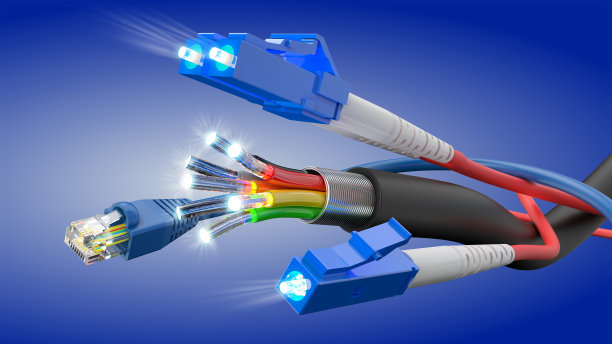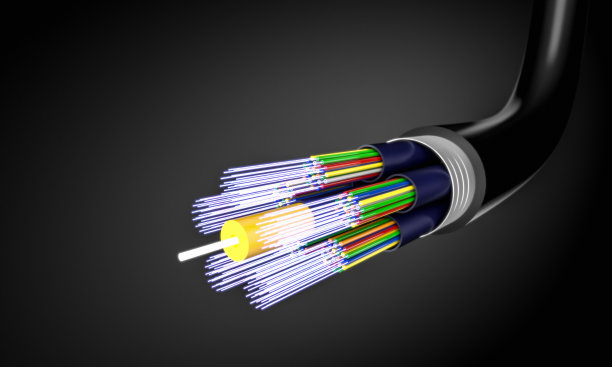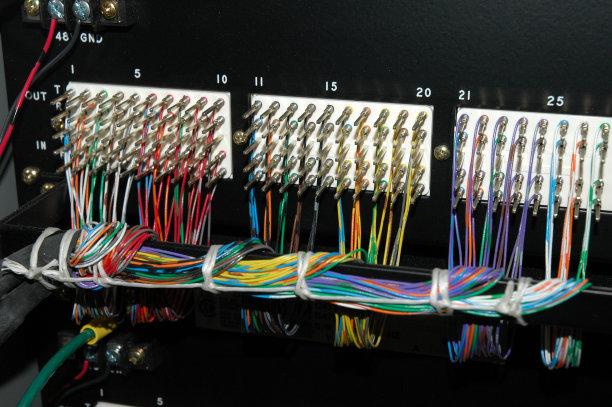Fiber optic cables have revolutionized data transmission, offering unparalleled speed and reliability. Multi-mode and single-mode fiber optic cables stand out as two dominant types, each with unique characteristics. Multi-mode fiber optic cable, with core sizes ranging from 50 μm to 62.5 μm, supports short-range communication. Conversely, single mode fiber optic cable, boasting a core size of 8 to 9 μm, excels in long-distance applications. These differences make each cable type suitable for specific scenarios, such as aerial fiber optic cable installations or fiber optic cable for telecom networks, where factors like distance, bandwidth, and cost play a pivotal role.
- Multi-mode fiber works well for short distances. It is cheaper and great for local networks and data centers.
- Single-mode fiber is better for long distances. It can send lots of data far, over 80 kilometers, with little signal loss.
- To pick the right fiber, think about distance, data needs, and cost. Choose what fits your use best.
Understanding Multi-Mode and Single-Mode Fiber Optic Cables
What is a Multi-Mode Fiber Optic Cable?
A multi-mode fiber optic cable is designed for short-distance data transmission. It features a larger core diameter, typically ranging from 50 to 62.5 microns, which allows multiple light rays to propagate simultaneously. This characteristic enables higher data rates over shorter distances but introduces modal dispersion, which can degrade signal quality over longer runs.
Multi-mode fibers are categorized into different types, such as OM1, OM2, OM3, and OM4, each offering varying levels of performance. For instance:
- OM1: Standard multi-mode fiber with a core diameter of 62.5 microns.
- OM3: High-speed multi-mode fiber supporting 10 Gbit/s over 550 meters.
- OM4: Optimized for 40 and 100 Gbit/s over 125 meters.
These cables are commonly used in local area networks (LANs) and data centers due to their cost-effectiveness and ease of installation.
What is a Single-Mode Fiber Optic Cable?
Single-mode fiber optic cables are engineered for long-distance communication. They have a smaller core diameter, typically between 8 and 10 microns, which allows only one mode of light to propagate. This design minimizes modal dispersion and signal attenuation, making them ideal for high-bandwidth applications over extended distances.
Key performance metrics for single-mode fibers include:
| Metric | Definition |
|---|---|
| Dispersion | The spreading of light pulses over distance, affecting signal clarity. |
| Attenuation | The reduction in signal strength, measured in dB/km. |
| Zero-dispersion wavelength | The wavelength at which dispersion is minimized, crucial for optimizing performance. |
Single-mode fibers are widely used in telecommunications and internet backbone networks.
Differences in Core Design and Light Propagation
The core design and light propagation characteristics distinguish multi-mode and single-mode fiber optic cables. Multi-mode fibers, with their larger core diameters, support multiple light paths, leading to higher modal dispersion. In contrast, single-mode fibers transmit a single light beam, reducing dispersion and enabling longer transmission distances.
| Fiber Type | Core Diameter (microns) | Light Propagation Characteristics | Advantages | Disadvantages |
|---|---|---|---|---|
| Single-mode | 8 to 10 | Allows only one mode of light transmission, reducing signal dispersion and attenuation. | Increased speeds and distances due to reduced modal dispersion. | Requires advanced lasers for data transmission. |
| Multi-mode | 50 to 62.5 | Allows multiple modes of light transmission, leading to modal dispersion and signal degradation. | Can carry multiple light rays simultaneously. | Higher modal dispersion results in reduced signal quality over long distances. |
Understanding these differences is crucial for selecting the right cable for specific applications, as highlighted in industry research from Fiber Optic Magazine and the Journal of Optical Networking.
Performance Comparison of Multi-Mode and Single-Mode Fiber
Core Diameter and Light Transmission Efficiency
The core diameter plays a critical role in determining the light transmission efficiency of fiber optic cables. Single-mode fiber, with a core diameter of approximately 9 microns, allows only a single light mode to propagate. This design minimizes light reflections and ensures efficient transmission over long distances. In contrast, multi-mode fiber optic cable features a larger core diameter, typically 50 or 62.5 microns, which supports multiple light modes. While this enables higher data rates over short distances, it also introduces modal dispersion, reducing efficiency over longer spans.
| Feature | Single-Mode Fiber | Multi-Mode Fiber |
|---|---|---|
| Core Diameter | ~9 microns | 50 or 62.5 microns |
| Light Propagation | Single light mode | Multiple light modes |
| Transmission Distance | Up to 80+ kilometers | 300 meters to 2 kilometers |
| Data Rate Over Distance | Maintains high speed | Limited by modal dispersion |
| Cost | Higher | Lower for short-range applications |
| Use Case | Long-distance networks | LANs and data centers |
The smaller core of single-mode fiber ensures superior light transmission efficiency, making it the preferred choice for long-distance, high-bandwidth applications.
Bandwidth and Data Transmission Speeds
Bandwidth and data transmission speeds are key performance metrics for fiber optic cables. Single-mode fiber supports bandwidths ranging from 1 to 10 Gbps over long distances, maintaining consistent performance due to its reduced modal dispersion. Multi-mode fiber optic cable, on the other hand, can achieve bandwidths of up to 100 Gbps but is limited to shorter distances, typically between 300 and 550 meters. This limitation arises from the larger core size, which increases modal dispersion and signal degradation.
| Fiber Type | Bandwidth (Gbps) | Transmission Distance (m) | Core Diameter (microns) | Light Source |
|---|---|---|---|---|
| Single-Mode | 1-10 | Long distances | Smaller core | LASER |
| Multi-Mode | Up to 100 | 300-550 | 62.5 or 50 | LED |
For applications requiring high-speed data transmission over short distances, multi-mode fiber optic cable is a cost-effective solution. However, single-mode fiber remains unmatched for long-distance, high-bandwidth requirements.
Distance Capabilities for Long-Distance Transmission
Single-mode fiber excels in long-distance transmission due to its low attenuation and reduced modal dispersion. OS1 and OS2 cables, two common types of single-mode fiber, demonstrate remarkable performance over extended distances. OS1 cables support distances up to 10 kilometers with an attenuation rate of 1 dB/km, while OS2 cables can reach up to 200 kilometers with an attenuation rate of 0.4 dB/km. These characteristics make single-mode fiber the backbone of telecommunications and internet infrastructure.
- A large data center implemented OS1 cables for intra-building connections, achieving high-speed data transmission across its servers.
- A telecom company used OS2 cables for its long-haul network, significantly improving data transmission speeds and reliability.
- A city’s Metropolitan Area Network (MAN) was built using OS2 cables, effectively linking several local area networks.
Multi-mode fiber, while limited in distance capabilities, remains a practical choice for short-range applications such as local area networks (LANs) and data centers.
Signal Loss and Attenuation
Signal loss, or attenuation, is a critical factor in evaluating fiber optic cable performance. Single-mode fiber exhibits significantly lower attenuation due to its smaller core size, which minimizes light reflections. Operating at a wavelength of 1550 nm, single-mode fiber experiences less scattering, ensuring better signal quality over long distances. Multi-mode fiber, with its larger core size, suffers from higher attenuation over extended distances, making it less suitable for long-range applications.
For instance, single-mode fiber can maintain signal integrity over distances exceeding 80 kilometers, while multi-mode fiber is typically limited to 2 kilometers. This difference underscores the importance of selecting the appropriate cable type based on the specific requirements of the application.
Cost Comparison: Multi-Mode vs Single-Mode Fiber
Installation Costs and Equipment
The installation of fiber optic cables involves several cost factors, including the cables themselves, transceivers, and labor. Multi-mode fiber optic systems generally have lower initial costs. Their larger core size simplifies installation, reducing the need for specialized equipment and expertise. This makes them a cost-effective choice for short-range applications, such as local area networks (LANs) and data centers.
Single-mode fiber systems, on the other hand, require more precise installation due to their smaller core size. This increases labor costs, as expert technicians must handle the process to ensure optimal performance. Additionally, single-mode transceivers are more expensive than their multi-mode counterparts, further raising the overall installation cost.
| Aspect | Multi-Mode Fiber (MMF) | Single-Mode Fiber (SMF) |
|---|---|---|
| Initial Cost | Lower | Higher |
| Installation Complexity | Easier due to larger core size | More complex due to smaller core size |
| Suitable for | Short-range applications | Long-distance transmission |
Despite the higher costs, single-mode fiber remains essential for long-distance communication, where its performance advantages outweigh the initial investment.
Maintenance and Operational Costs
Maintenance and operational costs also differ significantly between the two fiber types. Multi-mode fiber systems typically incur lower maintenance expenses. Their larger core size makes them less susceptible to alignment issues, reducing the need for frequent adjustments. Furthermore, multi-mode systems use LED light sources, which are more affordable and easier to replace than the laser sources used in single-mode systems.
Single-mode fiber systems, while offering superior performance, demand higher maintenance costs. Their smaller core size requires precise alignment, and any misalignment can lead to signal degradation. Additionally, the laser light sources used in single-mode systems are more expensive to maintain and replace. These factors contribute to the higher total cost of ownership for single-mode fiber systems.
- Multi-mode fiber systems are generally easier to maintain due to their simpler design.
- Single-mode fiber systems require specialized handling, increasing operational costs.
Cost-Effectiveness for Long-Distance Applications
When evaluating cost-effectiveness for long-distance applications, single-mode fiber emerges as the clear winner. Its ability to transmit data over distances exceeding 80 kilometers without significant signal loss makes it indispensable for telecommunications and internet backbone networks. Although the initial and maintenance costs are higher, the long-term benefits of reduced signal attenuation and higher bandwidth justify the investment.
Multi-mode fiber, while more affordable upfront, is not suitable for long-distance applications. Its higher modal dispersion and attenuation rates limit its effectiveness to short-range installations. For organizations prioritizing cost-efficiency in small-scale deployments, multi-mode fiber remains a practical choice.
Tip: Organizations should consider both initial and long-term costs when selecting a fiber optic system. While multi-mode fiber is cost-effective for short distances, single-mode fiber offers better value for long-distance applications.
Applications of Multi-Mode and Single-Mode Fiber Optic Cables
Best Use Cases for Multi-Mode Fiber Optic Cable
Multi-mode fiber optic cable is highly versatile and finds applications across various industries. Its larger core diameter and ability to transmit multiple light modes make it ideal for short-distance communication. Industries often rely on this cable type for:
- Lighting solutions: Automotive and decorative lighting systems benefit from its efficiency and flexibility.
- Consumer electronics: High-resolution audio and video devices use multi-mode fibers for seamless signal transmission.
- Mechanical inspection tools: Lightweight and bend-insensitive properties make it suitable for inspecting hard-to-reach areas.
- Data centers and LANs: Cost-effective and easy to install, multi-mode fibers are perfect for high-speed communication within confined spaces.
The growing demand for faster and more secure communication systems continues to drive the adoption of multi-mode fiber optic cable in these sectors.
Ideal Scenarios for Single-Mode Fiber Optic Cable
Single-mode fiber excels in scenarios requiring long-distance, high-bandwidth communication. Its smaller core diameter minimizes signal loss and ensures optimal performance. Key applications include:
- Public safety and cellular networks: Reliable communication infrastructure depends on single-mode fibers for uninterrupted service.
- Metropolitan and residential environments: These fibers connect urban and suburban areas, supporting internet and telecommunication services.
- Outside Plant (OSP) systems: Single-mode fibers are essential for outdoor installations, offering durability and economic benefits.
- 5G and FTTH deployments: Their low loss and high efficiency make them indispensable for next-generation technologies.
Proper installation and testing are critical to maximizing the performance of single-mode fibers in these scenarios.
Industry Trends in 2025 and Dowell’s Role
The fiber optic industry is poised for significant growth by 2025. The market for fiber optic patch cords is projected to grow from USD 3.5 billion in 2023 to USD 7.8 billion by 2032. This surge reflects the increasing demand for high-speed internet and cloud infrastructure. Similarly, the overall fiber optic cable market is expected to reach USD 30.5 billion by 2030, driven by the expansion of data centers and the adoption of 5G and FTTH technologies.
Dowell plays a pivotal role in this evolving landscape. By offering high-quality fiber optic solutions, the company ensures network reliability and scalability. Its products, such as fiber optic patch cords, enhance the performance of modern data centers and support the growing need for robust communication systems.
Choosing the Right Fiber Optic Cable for Your Needs
Key Factors: Distance, Bandwidth, and Budget
Selecting the right fiber optic cable requires careful consideration of technical factors such as distance, bandwidth, and budget. Each of these elements plays a critical role in determining the optimal cable type for specific applications.
Single-mode fibers are best suited for long-distance communication due to their ability to transmit data over distances of up to 160 kilometers with minimal signal loss. In contrast, multi-mode fibers are more appropriate for shorter distances, typically ranging from 300 meters to 2 kilometers, depending on the type and speed. For example, OM3 and OM4 multi-mode fibers can handle higher bandwidths over short distances, making them ideal for data centers and local area networks.
Budget constraints also influence the choice of fiber optic cables. Single-mode fibers, while offering superior performance over long distances, are more expensive to install and maintain. Multi-mode fibers, with their cost-effective installation and equipment, provide a practical solution for organizations with limited budgets and short-range communication needs.
| Factor | Description |
|---|---|
| Fiber Type | Single-mode vs. multi-mode; affects distance and bandwidth capabilities. |
| Distance Requirements | Determines the length of fiber needed; too short or too long can lead to inefficiencies. |
| Bandwidth Needs | Current and future bandwidth requirements influence the choice of fiber type. |
| Budget Constraints | Cost differences between single-mode and multi-mode fibers; impacts overall project budget. |
| Application Scenarios | Different applications may require specific types of fiber for optimal performance. |
| Future-oriented Considerations | Upgrading capabilities and technological advancements can affect long-term costs and choices. |
Organizations must evaluate these factors to ensure their investment aligns with both current and future communication needs.
Multi-mode and single-mode fiber optic cables address distinct needs. Multi-mode fiber offers cost-effective solutions for short distances, such as in LANs and data centers, while single-mode fiber excels in long-distance, high-bandwidth applications. By 2025, advancements in fiber optic technology will sustain the relevance of both types, meeting diverse communication demands.
Key Insight: The fiber optic market is projected to grow significantly, driven by increasing data demands and government initiatives. Dowell’s high-quality solutions ensure reliability and cost-efficiency, supporting this growth.
| Feature | Single-Mode Fiber | Multi-Mode Fiber |
|---|---|---|
| Distance Capability | Up to 140 kilometers | Up to 2 kilometers |
| Bandwidth Capacity | Supports data rates up to 100 Gbps and beyond | Maximum speeds range from 10 Gbps to 400 Gbps |
| Cost-Effectiveness | More expensive for short distances | More cost-effective for short distances |
FAQ
What is the primary difference between single-mode and multi-mode fiber?
Single-mode fiber supports long-distance, high-bandwidth communication with minimal signal loss. Multi-mode fiber is cost-effective for short distances but experiences higher modal dispersion.
Which industries benefit most from multi-mode fiber optic cables?
Industries like data centers, LANs, and consumer electronics benefit from multi-mode fiber due to its affordability and suitability for short-range, high-speed communication.
Why is single-mode fiber more expensive to install?
Single-mode fiber requires precise installation and specialized equipment, including advanced lasers, which increases labor and material costs compared to multi-mode systems.
Post time: Apr-15-2025



